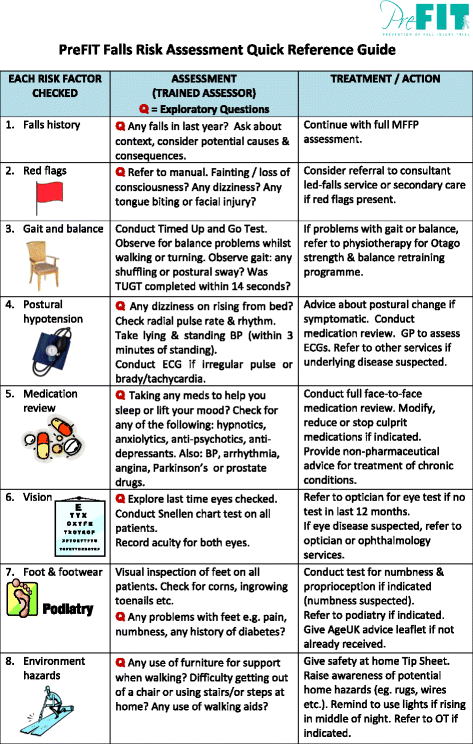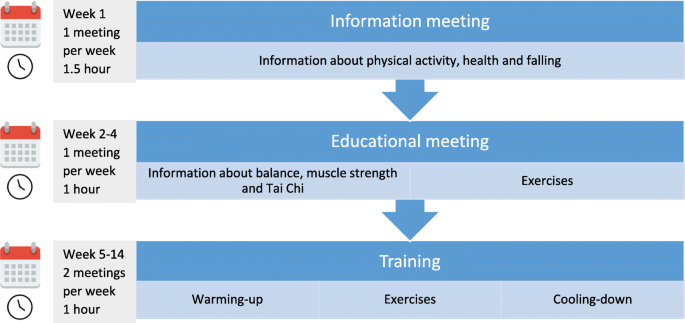Facts About Dementia Fall Risk Uncovered
Table of Contents8 Easy Facts About Dementia Fall Risk ExplainedNot known Facts About Dementia Fall RiskDementia Fall Risk Can Be Fun For EveryoneDementia Fall Risk Can Be Fun For EveryoneThe Ultimate Guide To Dementia Fall Risk
The FRAT has 3 sections: fall threat status, risk variable list, and activity strategy. A Loss Danger Standing includes information regarding background of current falls, medicines, emotional and cognitive status of the patient - Dementia Fall Risk.If the person ratings on a threat variable, the equivalent number of points are counted to the person's autumn danger score in the box to the much. If an individual's loss danger rating completes 5 or higher, the person goes to high risk for drops. If the individual ratings only four factors or lower, they are still at some threat of dropping, and the nurse must use their best medical analysis to manage all fall risk elements as component of an all natural care plan.
These typical techniques, in general, help develop a secure setting that minimizes accidental falls and delineates core preventive steps for all people. Indicators are essential for clients at threat for falls.
Dementia Fall Risk Fundamentals Explained
Wristbands must consist of the person's last and very first name, date of birth, and NHS number in the UK. Only red color should be used to indicate unique client status.
Things that are as well far might call for the individual to reach out or ambulate unnecessarily and can possibly be a hazard or add to drops. Assists avoid the individual from going out of bed without any kind of aid. Nurses respond to fallers' telephone call lights a lot more swiftly than they do to lights started by non-fallers.
Visual impairment can considerably create drops. Maintaining the beds closer to the flooring decreases the danger of drops and major injury. Putting the mattress on the floor dramatically decreases fall danger in some medical care setups.
How Dementia Fall Risk can Save You Time, Stress, and Money.
People who are high and with weak leg muscles that try to sit on the bed from a standing setting are likely to fall onto the bed because it's also reduced for them to reduce themselves securely. Likewise, if a tall individual efforts to rise from a reduced bed without support, the patient is likely to drop back down onto the bed or miss out on the bed and fall onto the floor.
They're developed to advertise timely rescue, not to stop falls from bed. Audible alarm systems can likewise advise the individual not to stand up alone. The usage of alarm systems can also be a replacement for physical restraints. Aside from bed alarms, increased guidance for high-risk individuals also might help avoid falls.

Individuals with a shuffling stride rise autumn opportunities significantly. To reduce fall threat, footwear need to be with a little to no heel, thin soles with slip-resistant step, and sustain the ankles. Encourage client to use nonskid socks to stop the feet from moving upon standing. Encourage people to use suitable, well-fitting shoesnot nonskid socks for motion.
The Ultimate Guide To Dementia Fall Risk
Individuals, particularly older adults, have reduced aesthetic capability. Lighting an unfamiliar environment helps increase visibility if the patient have to stand up during the night. In a research study, homes with sufficient lights report fewer drops (Ramulu et al., 2021). Renovation in lights in the house may reduce autumn prices in older grownups (Dementia Fall Risk). Using stride belts by all health treatment companies can promote safety when helping individuals with transfers from bed to chair.

Sitters work for assuring a protected, secured, and safe environment. Studies showed very low-certainty proof that caretakers minimize fall threat in acute care healthcare facilities and only moderate-certainty that choices like video clip surveillance can minimize caretaker use without boosting autumn risk, recommending that caretakers are not as beneficial as initially believed (Greely et al., 2020).
Unknown Facts About Dementia Fall Risk

Raised physical conditioning decreases the danger for falls and limits injury that is endured when look at this website fall transpires. Land and water-based exercise programs might be in a similar way helpful on balance and gait and therefore minimize the risk for falls. Water exercise might contribute a positive benefit on balance and stride for females 65 years and older.
Chair Increase Exercise is a basic additional resources sit-to-stand exercise that helps reinforce the muscular tissues in the thighs and buttocks and improves flexibility and self-reliance. The goal is to do Chair Rise exercises without making use of hands as the customer becomes more powerful. See resources section for a detailed guideline on exactly how to perform Chair Increase workout.
Comments on “3 Simple Techniques For Dementia Fall Risk”